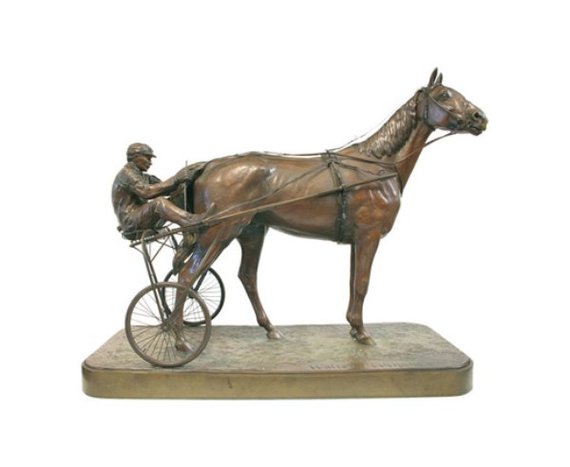A mere 1,500 years or so since the Olympics of Ancient Greece, the modern version of the Olympics began; and yet another sixteen years later, it was expanded to include the arts. In any quality school curricula, essential programming doesn't only include STEM (science, technology, engineering and math) -- it includes STEAM. The addition of "A" for "art" seems like a no-brainer.
The athleticism required for the Olympics demands persistence, brute force and strategic methodology, with math as the end-factor: who was statistically the fastest, and who got the best score. These are valuable, measurable elements. Yet there was once a time when sculpting bronze held as much weight in the Olympics as sculpting muscles, and a brushstroke was as important as the backstroke. Skills on the field were revered, as were skills in music, architecture, literature, painting and sculpture -- the five artistic categories eligible for the gold, silver and bronze.
The founder of the International Olympic Committee (IOC), Baron Pierre de Coubertin, saw art competitions as an integral part of his vision for the Games. According to the Olympic website, one of the core responsibilities of the IOC to this day is "to encourage and support initiatives blending sport with culture and education."
From 1912 to 1948, more than 150 Olympic medals were awarded in artistic competitions for original works in the fine arts that were inspired by athletic endeavors. As the competition became large enough to garner more submissions however, the Committee deemed it unfair to consider professional artists (those who had sold work outside of the Games) in the competition. The number and quality of submissions decreased and the competition was stopped, officially striking all previous medals from the record along the way.
Since then, the IOC has held art exhibitions and contests "alongside" the Olympics, instead of as an integral "part" of them. Still, as a culture we can't help it - the arts are innately incorporated into the Games. This year, a new Artists-in-Residency program was announced. The arts are what inspire us, excite us and help us to understand cultural differences.
In 1912, the gold medal winners included a building plan for a "modern" stadium by two Swiss architects; today, the construction of modern stadiums for the Olympic Games is standard practice for the host city as it prepares its Olympic Village.
The opening ceremonies, which pay homage to the host country's history and culture, is often expressed through extravagant lighting, live music, storytelling and performances.
Routines that are seamlessly executed by gymnasts and figure skaters are meticulously choreographed like an acrobatic dance.
The Olympic anthem, "Bugler's Dream" by Leonard Arnaud -- with its deep percussive bravado - is synonymous with the competition. It channels a feeling of victory, pride and an ingrained competitive prowess.
According to the IOC, "Olympism is a philosophy of life, exalting and combining, in a balanced whole, the qualities of body, will and mind." So we can take the medals out the games, but the art is there to stay. We can't help it. It's in our nature.
